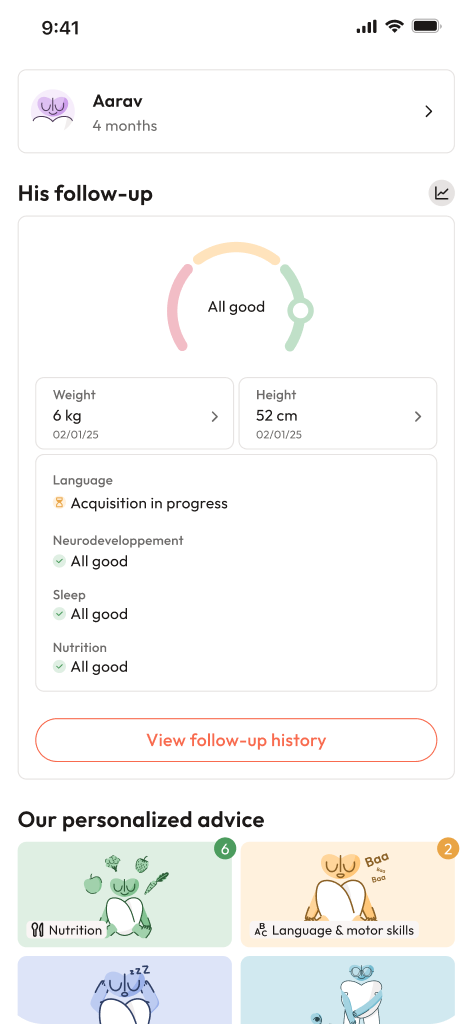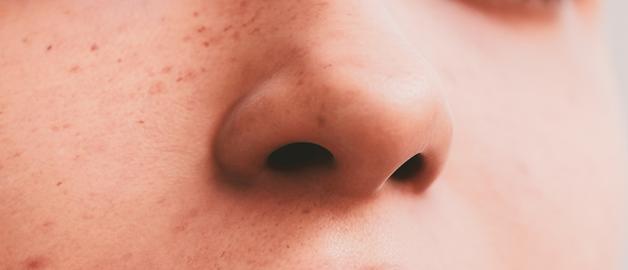Worried about how even a glass of wine at a wedding might affect your baby? Wondering if that accidental sip before you found out you were pregnant could have lasting effects? The topic of alcohol during pregnancy is surrounded by doubts, cultural habits, social pressure and, very often, a good dose of silence. Many parents navigate these questions late at night, scrolling through their phones for solid answers that balance science and real life. Let’s unravel what science says, when risk matters most, and what practical steps can safeguard your child’s future – all while respecting your journey, your questions, and the complex patchwork of decisions that underlie every pregnancy.
You’ll discover what actually happens to your developing baby when alcohol is involved, why even small amounts matter, how to decode standard drinks and alcohol by volume (ABV), what fetal alcohol spectrum disorders (FASD) really mean, and, if stopping feels tough, what support exists. Ready for both clarity and nuance? Let’s get started.
Understanding alcohol during pregnancy: what science reveals
What exactly happens when a pregnant individual consumes alcohol? After an alcoholic beverage is absorbed into the bloodstream, ethanol – the primary intoxicant in drinks – crosses the placenta almost instantly. What’s striking is how the fetus, with its underdeveloped enzyme systems, remains exposed far longer than the parent. Imagine a scenario: the maternal body might clear the alcohol relatively quickly, but the fetus, equipped only with a budding liver, faces a more prolonged challenge. The concept of “blood alcohol concentration (BAC)” becomes more than an abstract figure—it marks a tangible risk, with high peak levels (especially from binge episodes) linked to more significant harm.
Is beer safer than wine? Does an occasional cocktail at a celebration carry fewer dangers? The answer is stark: the type of alcohol is irrelevant. It’s all about ethanol grams. Whether whiskey, craft beer, or homemade wine, the risk remains.
Factors that make a difference:
- Timing: The first eight weeks are especially sensitive as organs form; every trimester, though, carries its own vulnerabilities, with brain growth and connectivity at stake right up to delivery.
- Dose and Pattern: Occasional sips are unlikely to carry the same weight as repeated or heavy use. Binge drinking – often defined as four or more standard drinks in about two hours – is particularly worrisome due to resulting high BAC spikes.
- Cumulative effect: Low, repeated doses can add up over the months.
Fetal development and exposure windows: what really matters
From the third to the eighth week, the foundations of organs—the brain, heart, kidneys—are laid down. Interference via alcohol during this window opens the door to longer-term consequences. As pregnancy progresses, particularly through the second and third trimesters, neurodevelopmental processes like neurogenesis (the birth of new brain cells) and synaptogenesis (creation of connections between neurons) are underway. Picture the growing brain as a network of wires; even modest disruptions in wiring from alcohol can result in functional differences, sometimes as subtle as issues with attention or memory, at other times as tangible as learning difficulties.
Organogenesis and neuronal migration aren’t simply technical terms—they’re the finely tuned symphony that choreographs everything from your child’s reflexes to their ability to process language years later. Alcohol can, in moments, mute or scramble parts of this performance, leading to structural defects or invisible, lifelong neurodevelopmental changes.
Practical actions: what should parents do?
Taking action is less about guilt, more about embracing the present. Drank before you realized you were expecting? The most effective decision is simple: stop now. Each day without alcohol during pregnancy improves your child’s prospects. Next, schedule a visit with your provider. Discuss openly when, how often and how much was consumed. Providers are trained to support, not judge.
Clinical focus often includes:
- Early ultrasound to check fetal development and clarify gestational age.
- From there, tailored monitoring.
- Open conversation about additional risks such as tobacco, medication, or stress.
Starting or continuing prenatal vitamins rich in folate (crucial for brain and spinal cord formation) and possibly exploring choline supplementation (emerging evidence shows benefits for neurodevelopment, though not a magic shield) can help. Nutrition, rest, and wellness strategies (think daily walks, stress management, mocktails instead of cocktails) are powerful allies.
Myths, facts, and everyday realities
You’ve probably heard whispered reassurances: “A little wine is good for the heart,” “Beer is gentle, especially the dark ones,” “One celebration won’t count, right?” Let’s pause. Medically, no safe threshold for alcohol during pregnancy has been established. The false comfort of believing that beer or wine is harmless arises from cultural myths rather than scientific data.
Here are common misconceptions tackled with facts:
- “Small sips are fine.” In reality, every sip means some ethanol exposure.
- “Dark beers boost iron.” Ethanol content outweighs any nutritional perk.
- “Drinking before a pregnancy test isn’t relevant.” Any alcohol ingested prior to a positive test can reach the embryo if timing aligns.
Fetal Alcohol Spectrum Disorders: a spectrum that often goes unseen
When considering the term Fetal Alcohol Spectrum Disorders (FASD), think of a continuum. At one end, Fetal Alcohol Syndrome (FAS) brings visible changes (facial features, stunted growth, developmental delays). But most cases exist in the quieter shades of the spectrum—a spectrum encompassing subtle challenges with attention, language processing, fine motor skills, and sleep patterns. Two children exposed to identical quantities might develop in distinct ways because of genetics, environment, nutrition, or co-exposures (like tobacco).
Symptoms might include:
- Problems with focus and impulse control
- Mild language or memory difficulties
- Coordinating movements (dyspraxia)
- Sensory processing quirks, sometimes overlooked in busy clinics
Diagnoses depend on combining clear history, growth charts, specific facial measurements (when present), and neurodevelopmental testing – occasionally supplemented by imaging. The earlier supportive therapies and educational planning begin, the better for your child’s journey.
Health risks for the baby and the pregnancy
Let’s go beyond buzzwords and look at actual risks:
- Miscarriage or stillbirth is more likely with heavy exposure.
- Preterm birth or low birthweight may result from repeated intake.
- Organ malformations, particularly involving the heart or kidneys, often reflect timing – the earlier the exposure, the more severe.
- Following delivery, some newborns show feeding difficulties, disturbed sleep cycles, or signs reminiscent of withdrawal.
But here’s a balanced view: not every child exposed to alcohol will develop issues, especially if exposure is low and brief. It’s about risk, not certainty. The body, astonishingly resilient, can often compensate, especially when parents act quickly to stop and seek medical guidance.
Screening, honesty, and medical support
Screening for alcohol during pregnancy doesn’t have to feel invasive. Clinicians usually employ quick questionnaires like AUDIT-C, T-ACE, or TWEAK—just a few simple questions about frequency and quantity. Results are confidential and designed to open a caring, solutions-focused conversation. If a parent finds it hard to stop, brief motivational discussions, cognitive behavioral therapy, and referral to addiction services exist.
Disclosure isn’t about judgment but about tailoring follow-up—some may benefit from additional ultrasounds or early access to therapies, others may only need reassurance.
Navigating cravings, routines, and social pressure
Finding it tempting to reach for your usual glass in the evening, especially under the weight of stress, is no personal failure. Identify triggers—maybe a work gathering, a family celebration, or simply a ritual after a tiring day. Replace with a sparkling mocktail (think lime, mint, soda, and a dash of ginger)—delicious, festive, and safe. Habit stacking (linking a new behavior, like preparing herbal tea, to an established cue, say after dinner) helps shift routines slowly but steadily.
Simple scripts—“I’m not drinking during this pregnancy” or “Taking a health break right now”—work well during social encounters, letting you move quickly past awkward moments.
Non-alcoholic options and decoding labels
“Is it really safe if it’s labelled 0.5%?” Here, labels matter. True 0.0% drinks mean absolutely no detectable ethanol—best during pregnancy. Some non-alcoholic beers or kombuchas sneak in low levels; reading labels with care helps.
Need celebration ideas? Try:
- Sparkling water with fresh citrus and herbs
- Virgin mojito (lime, mint, soda)
- Warm spiced drinks with cinnamon or clove
Presentation—fancy glasses, colourful garnishes—transforms even routine moments into mini-celebrations, helping maintain the social rituals tied to drinks, without risk.
Mental health, well-being, and the postpartum phase
Mood dips and anxiety often lead to increased alcohol use—not as a character flaw, but as a coping mechanism when stress becomes overwhelming. Gentle routines, prioritising sleep, walks, or mindfulness—whether meditation or simply breathing exercises—can all help regulate cravings. If dependence is suspected, abrupt cessation must be managed with medical support to avoid withdrawal risks. Coordinated perinatal addiction care ensures safety for both baby and parent.
Your partner’s support will always amplify your own efforts. Reducing visible alcohol at home, discussing strategies for social events, and setting shared goals mean you’re not tackling this challenge in isolation.
Alcohol and breastfeeding: timing, transfer, and precautions
Once the baby arrives, alcohol during pregnancy is no longer the concern, but alcohol and breastfeeding pose new questions. Ethanol travels into breastmilk in direct correlation with blood alcohol concentration. The popular advice? Waiting about 2–3 hours after a single standard drink before breastfeeding, though the safest is to nurse only when BAC has returned to zero. Planning in advance—expressing milk beforehand, involving family members—smoothes celebrations. If alcohol use starts creeping upwards after delivery, supports are available and effective.
Everyday scenarios: hidden sources and practical planning
Surprised by the presence of alcohol in mouthwashes, certain cough syrups, or desserts flavoured with extracts like vanilla or rum? These hidden sources can be overlooked. Cooking may evaporate most alcohol, but small amounts might linger—choose recipes that sidestep alcohol altogether for peace of mind during pregnancy.
Dining out? Don’t hesitate to ask for non-alcoholic alternatives. Even in the most festive settings, a cleverly mixed 0.0% drink or a soda with a twist of lime serves as both shield and celebration.
Preconception and partner considerations
If you’re planning a pregnancy, avoid alcohol entirely—as conception often sneaks up before the faintest test line appears. Some evidence suggests heavy paternal drinking might also affect sperm quality and early development, so partners joining in the alcohol-free journey help boost fertility and the health of both parent and baby.
Key takeaways
- Alcohol during pregnancy has no safe threshold. Experts and major medical bodies (like WHO) advocate total abstinence for the healthiest outcomes.
- Risk varies depending on timing, quantity, and pattern—with binge drinking or early heavy exposure carrying the greatest danger, but the developing brain remains vulnerable throughout.
- Prompt cessation after discovering pregnancy rapidly reduces risks; practical strategies, open disclosure, and customized medical monitoring smooth the path.
- Myths persist, but the reality is that ethanol, regardless of form, poses consistent threats to development.
- Whether you’re seeking to protect your growing baby, untangle mixed advice, or manage cravings, evidence-based support—including motivational counseling, mocktails, discreet refusal strategies and specialized care for those struggling with dependence—is accessible.
- For trustworthy help at every step, consider downloading the application Heloa for personalised advice and free child health questionnaires.
Questions Parents Ask
Can doctors test if my baby was exposed to alcohol in utero?
Yes, testing exists, but it’s not a one-size-fits-all solution. Biomarkers—like PEth in blood, or traces in a newborn’s meconium, umbilical cord, or hair—can highlight exposure to alcohol during pregnancy, but these tests zoom in on specific timeframes. Mostly, doctors rely on a transparent discussion with parents, opting for targeted testing only if there’s a genuine concern. Honest conversation will always guide whether extra checks or special follow-up is truly needed.
Will prenatal scans show alcohol-related harm?
Usually, ultrasounds spotlight growth issues or major physical differences only in severe cases. Most changes linked to alcohol during pregnancy are invisible on scans, hidden in how the brain connects and grows. Even if the scan looks fine, functional difficulties can emerge later. Developmental check-ups after birth matter—so don’t hesitate seeking them when in doubt.
Can supplements (like folate or choline) undo harm after I drank before knowing I was pregnant?
Supplements are powerful allies for general health, with folate supporting brain and spinal development. Choline offers some early promise for brain support. However, no supplement cancels out prior exposure to alcohol. The best path: stop drinking, continue or start supplements, and let your medical team guide the next steps—a mix of reassurance and practical monitoring.
Glossary highlights:
- ABV (Alcohol by volume): Shows how much pure alcohol is in a drink.
- Standard drink/unit: Measurement for ethanol content, standardizing risk.
- BAC (Blood alcohol concentration): Indicates the amount of alcohol in the blood.
- Binge drinking: Consuming a large amount in one go, pushing blood levels high.
- Teratogen: Any agent (like alcohol) that can disturb fetal development.
- FASD (Fetal alcohol spectrum disorders): Range of issues from alcohol exposure, including learning and health problems.
- IUGR (Intrauterine growth restriction): Baby growing slower than expected.
- AUD (Alcohol use disorder): Difficulty controlling alcohol intake.
Whenever you worry or wonder—open a dialogue with your healthcare provider. Each honest step taken today secures a healthier tomorrow for both parent and child. For extra guidance and tools, the application Heloa brings health tracking and medical questionnaires directly to your fingertips.

Further reading:
- About Alcohol Use During Pregnancy: https://www.cdc.gov/alcohol-pregnancy/about/index.html
- Drinking alcohol while pregnant: https://www.nhs.uk/pregnancy/keeping-well/drinking-alcohol-while-pregnant/
- Alcohol and pregnancy: MedlinePlus Medical Encyclopedia: https://medlineplus.gov/ency/article/007454.htm









